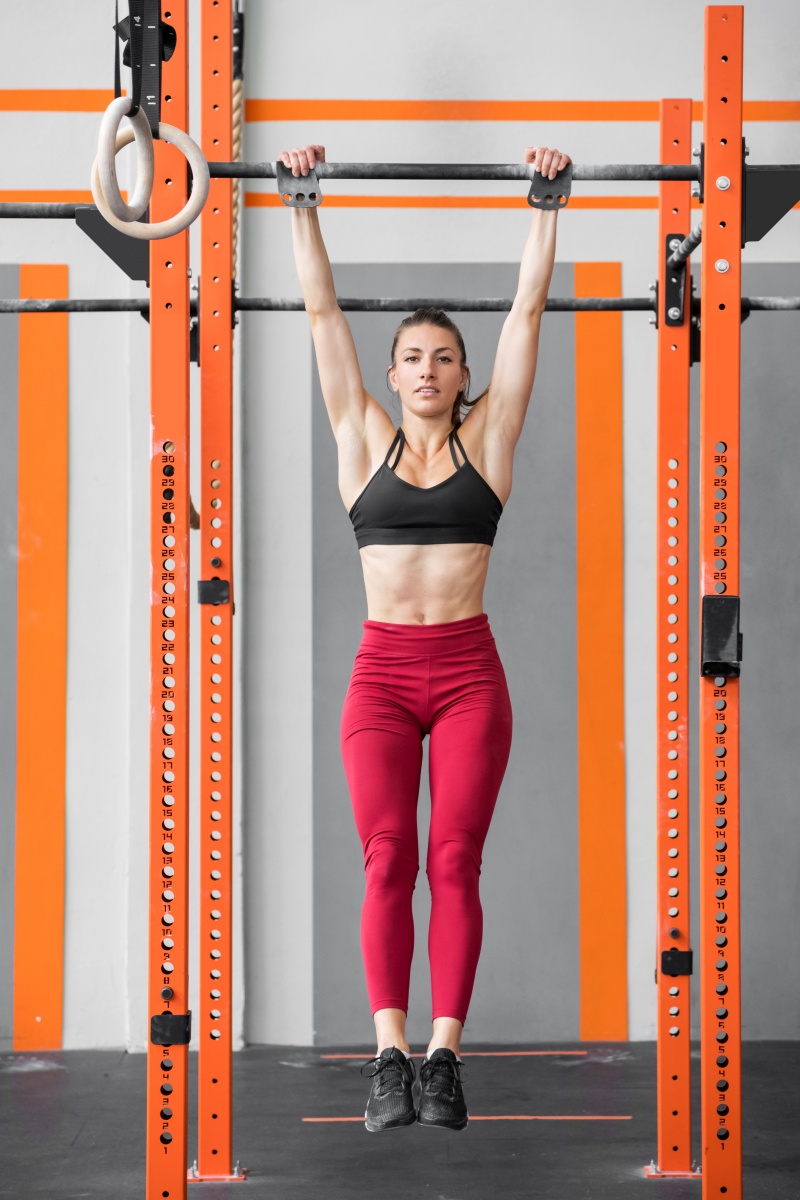When actress Samantha Ruth Prabhu posts a workout, people watch. When she attempts a 90-second dead hang challenge, people take notes. No gimmicks… just raw upper-body strength, mental discipline, and the humble power of gravity. This is about longevity, joint health, and the primal satisfaction of holding on when everything tells you to let go.
The dead hang isn’t a flashy CrossFit move or a circus trick. It’s old-school, minimalist, brutally honest. You either hang, or you fall. And in those 90 seconds (or more), you learn a lot about your body and your mind.
What Exactly Is A Dead Hang?
At its core, a dead hang is just that: you, suspended from a bar, hanging motionless. Palms over the bar (overhand grip), arms extended, shoulders relaxed but alert. Feet off the floor. Core engaged. Gravity doing its job.
And yet, it’s far more than it appears. Dead hangs target your forearms, shoulders, lats, upper back, wrists, and core. They decompress your spine, improve grip strength, stretch tight fascia, and build a kind of calm, functional strength that machines and reps often miss.
 Dead hangs exercise your forearms, shoulders, lats, upper back, wrists, and core at the same time (Getty Images)
Dead hangs exercise your forearms, shoulders, lats, upper back, wrists, and core at the same time (Getty Images)
How To Do Them Right
You’ll Need:
A pull-up bar, monkey bars, or gymnastics rings.A bench or box to step up onto. Do not jump.Optional: wrist straps or chalk if grip is a limiting factor.
Instructions:
Step up to the bar. Grip it overhand, shoulder-width apart.Lift your feet. Let your body fully extend. Arms straight.Stay still. Breathe deep. Don’t clench. Don’t cheat.Hold for 10–30 seconds to start. Your goal is 60-90 seconds over time.Step down safely. Shake it out. Repeat up to 3 sets.
Tip: Focus on nasal breathing during your hang. It slows your heart rate and builds mental endurance.
Modifications
Beginner: Start with feet gently touching a box to reduce load.Intermediate: Add shoulder shrugs at the bottom of your hang to engage traps.Advanced: Try hanging with one arm. Or add weight with a dip belt.
Variations of Dead Hangs
Dead hangs can be altered to suit various fitness levels and goals:
Overhand Grip Dead Hang: Involves gripping the bar with the palms facing away, focusing on forearm and grip strength.Neutral Grip Dead Hang: By using rings or a specially designed bar, the palms face each other, typically easier on the wrists and shoulders.With Movement: Adding slight movements, such as shoulder shrugs or leg raises, can increase the difficulty and strengthen additional muscle groups.
What Happens To Your Body When You Hang Daily?
This is where things get interesting. Daily dead hangs (or even 3–4x per week) can produce surprisingly far-reaching benefits:
1. Your Posture Improves
That forward hunch from your laptop? Dead hangs realign your spine and retrain your scapula. You start standing taller and moving better.
2. Your Grip Becomes Bionic
Whether you’re opening jars, deadlifting, or rock climbing, grip strength is your gateway drug to total-body strength.
3. Your Back and Shoulders Stretch Out
Feel like your spine is compressed into an accordion? Dead hangs create a natural decompression, which can relieve back stiffness and shoulder pain.
4. Your Core Fires Up
Yes, your abs work during a hang… especially if you maintain good pelvic alignment. It’s like planking, but vertical.
5. Your Nervous System Calms Down
The hang position triggers parasympathetic (rest-and-digest) activation, especially when paired with controlled breathing. That means Less stress. Better sleep. Sharper focus.
Why Dead Hangs Are a Smart Move for Ageing Athletes
If you’re over 40, or coming back from an injury, the dead hang is your friend. It allows you to load the joints passively, build tendon strength, and train core stability without impact. Even more compelling? Research shows that grip strength in your 40s and 50s correlates with mobility, cognition, and independence in old age. So yes, hanging around literally adds years to your life.
How long should you be able to dead hang?
Age GroupTarget Time21–3545-120 seconds36–4530-90 seconds46–6015-60 seconds60+10-30 seconds
By experience:
LevelHang DurationBeginner10-30 sec, 1-2 setsIntermediate30-45 sec, 2-3 setsAdvanced60+ sec, 2-4 sets
So go ahead. Grab the bar, hang tight, transform.
Read more:
Mumbai City FC Star Akash Mishra Shows What A Gen Z Pro Footballer’s Diet, Training, Sleep Schedule And Recovery Routine Actually Look LikeExplained: Why 7,000 Steps A Day Might Be All You Need To Reduce The Risk Of Death By 37%What Is Metabolic Flexibility? 5 Steps To Reset Your Body’s Fat-Burning Mode

